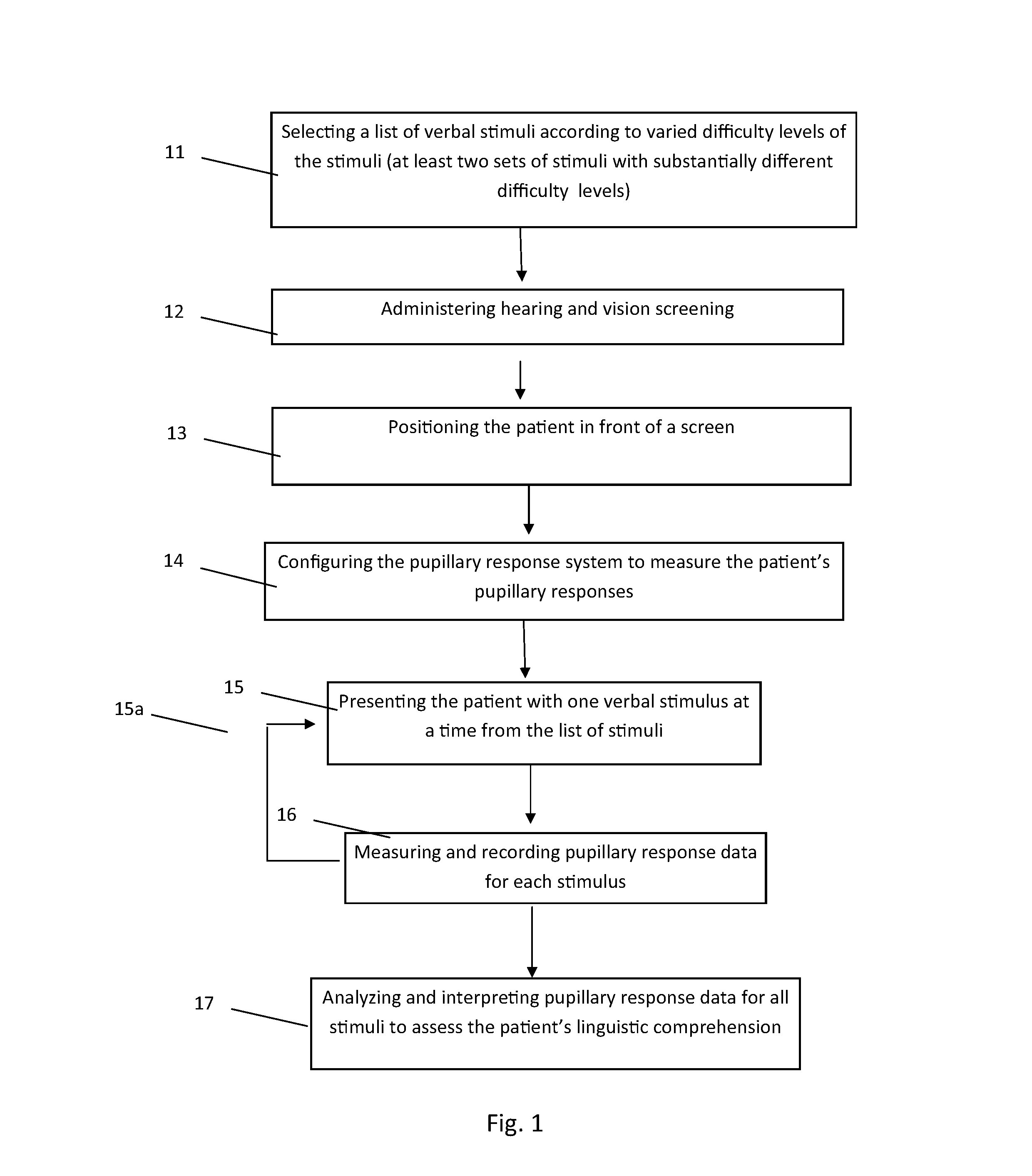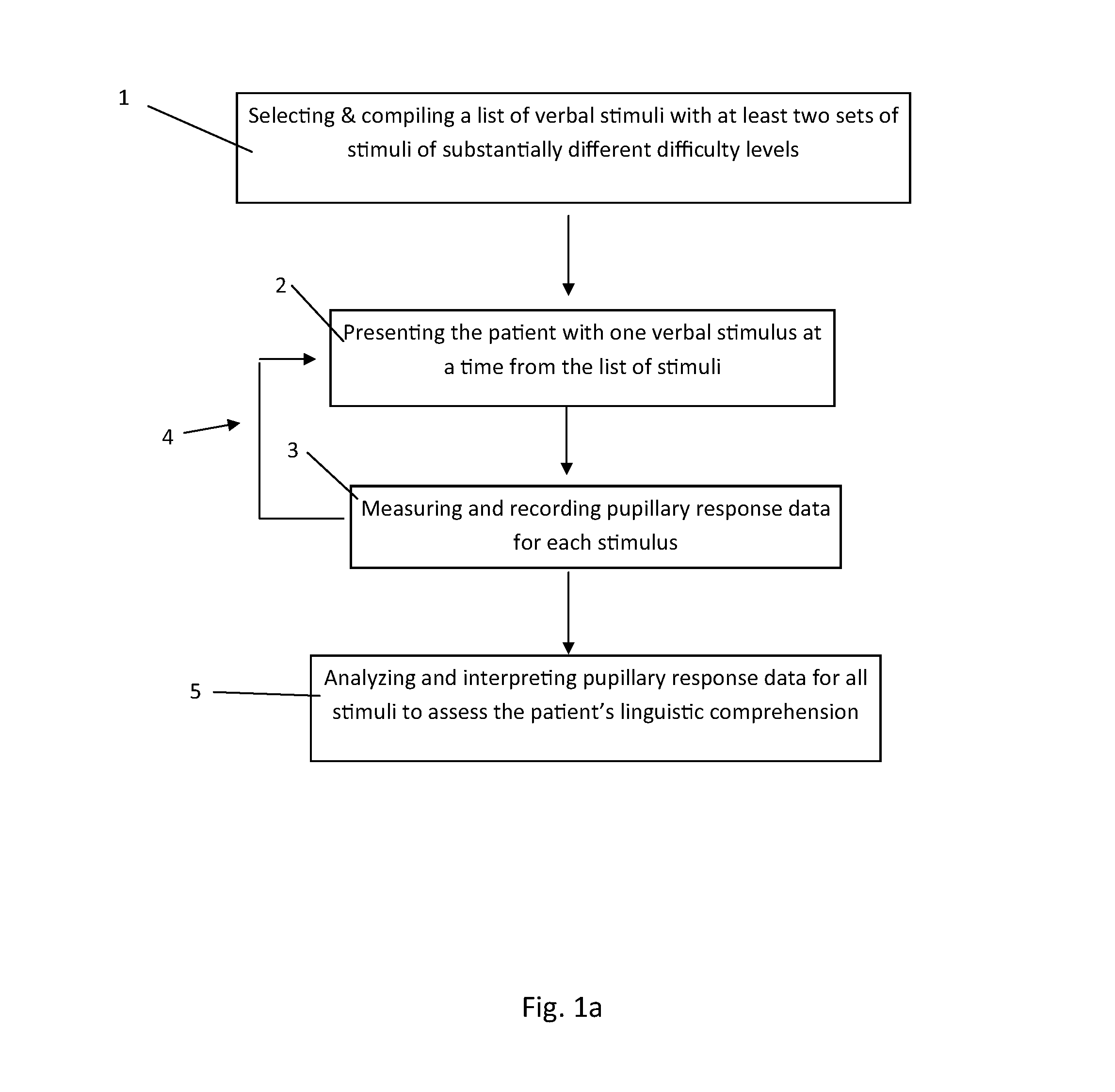Pupillometric assessment of language comprehension
a technology of language comprehension and pupil size, applied in the field of cognitive and linguistic assessment methods, can solve problems such as confounding, eye confusion, and viewers not being able to consciously control their own pupil size, and achieve the effect of keeping patients focused
- Summary
- Abstract
- Description
- Claims
- Application Information
AI Technical Summary
Benefits of technology
Problems solved by technology
Method used
Image
Examples
example 1
[0144]The purposes of this example were (1) to develop and test a method for indexing pupillometric responses to differences in word difficulty for participants with and without aphasia; (2) determine whether or not the degree of effort that participants with aphasia exhibit for easy versus difficult words is associated with the severity of their comprehension deficits and / or overall aphasia.
[0145]To examine differences during the processing of easy versus difficult words, two groups of participants were tested: a control group of adults without neurological impairments, and a group of PWA. The following research questions were addressed:
[0146]Are there significant differences in pupillary response corresponding to the presence or absence of aphasia?
[0147]In people with and without aphasia, are there significant differences in pupillary response corresponding to the difficulty of the verbal stimulus items?
[0148]Are there significant differences in pupillary response corresponding to...
example 2
[0244]The purpose of this example is to test procedural variations of pupillometric methods with individuals without aphasia to validate and standardize the method so that the present inventive method can reliably index cognitive effort and intensity required for processing easy and difficult verbal stimuli. Methodological aspects of the previous example, including TERP measurement and modality of stimulus presentation, will be systematically tested. The resulting method can be used for the study of effort in linguistic processing in individuals with aphasia or other neurological impairments.
[0245]The following questions will be addressed in this example:
[0246]How will different measurement techniques (i.e., absolute value, subtraction methods, and normalization methods) impact the measurement and interpretation of TERPS induced by processing of easy and difficult single nouns and sentences?
[0247]Will there be a significant difference in the amplitude of TERPs in the auditory-only v...
PUM
 Login to View More
Login to View More Abstract
Description
Claims
Application Information
 Login to View More
Login to View More - R&D
- Intellectual Property
- Life Sciences
- Materials
- Tech Scout
- Unparalleled Data Quality
- Higher Quality Content
- 60% Fewer Hallucinations
Browse by: Latest US Patents, China's latest patents, Technical Efficacy Thesaurus, Application Domain, Technology Topic, Popular Technical Reports.
© 2025 PatSnap. All rights reserved.Legal|Privacy policy|Modern Slavery Act Transparency Statement|Sitemap|About US| Contact US: help@patsnap.com



